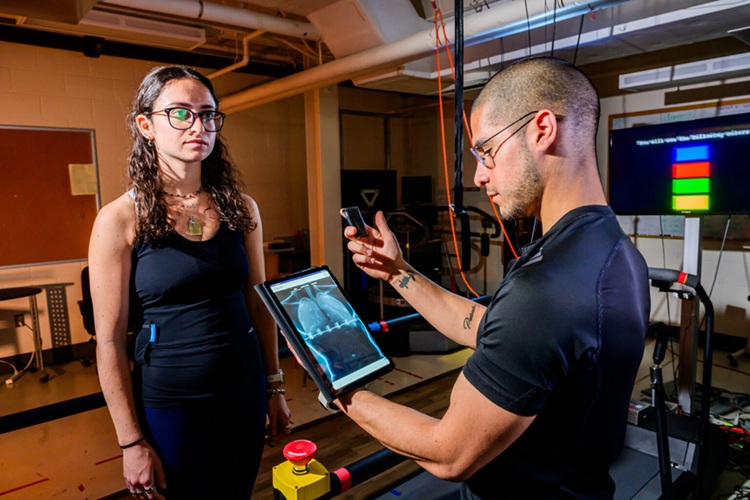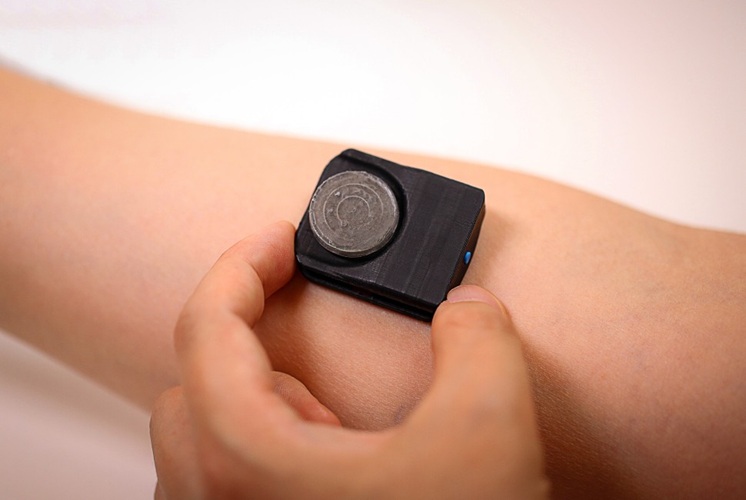TAVI Procedure Supported by Radial Artery Access Reduces Bleeding Complications
|
By HospiMedica International staff writers Posted on 22 Oct 2024 |
.jpg)
The TAVI procedure, or Transcatheter Aortic Valve Implantation, is a minimally invasive technique in which a new aortic valve is inserted through a femoral artery to replace a narrowed old valve. This method is gaining popularity, particularly among individuals aged 75-80 and those with medical risks, as it is often favored over open-heart surgery, which presents greater risks and necessitates a longer recovery period. In TAVI procedures, two femoral arteries are employed: one for introducing the aortic valve and guiding it to the correct position, and the other for injecting contrast fluid, which enhances visualization of the aorta and ensures precise valve placement. While access through the wrist has become standard practice in procedures like angioplasty to reduce the risk of severe bleeding, this approach has not yet been adopted for TAVI. Now, new research indicates that part of the TAVI procedure can be performed via the radial artery instead of the femoral artery, leading to fewer bleeding complications.
In a randomized study conducted in collaboration with multiple centers, a team of cardiologists and researchers from Radboud University Medical Center (Nijmegen, Netherlands) explored whether this technique, already established in angioplasty procedures, could also benefit the TAVI procedure involving aortic valve replacement. Patients scheduled for TAVI participated in the study and were randomly assigned to one of two groups: the standard procedure using both femoral arteries or the new method where the heart valve was introduced via the femoral artery and the contrast fluid was administered through the radial artery. A total of 238 patients took part in the study, and the findings revealed that serious bleeding requiring medical intervention occurred almost exclusively in the femoral artery group.
Additionally, the researchers made another adjustment to the procedure. During TAVI, patients typically receive a temporary pacemaker because the new valve may cause cardiac arrhythmia. While this pacemaker is usually removed immediately after the procedure, it may occasionally remain in place for several days. Traditionally, a femoral vein is used for pacemaker insertion, but in patients who had contrast fluid delivered via the wrist, the pacemaker was instead inserted through an upper-arm vein. This research, published in JAMA Network Open, highlights the advantages of using the radial artery for administering contrast fluid, as it results in fewer bleeding complications. Although this method may take slightly longer than using only femoral arteries, the team anticipates that this approach will be increasingly integrated into practice.
“This is already common in angioplasty, and we have now shown that it also provides advantages in the TAVI procedure,” said Niels van Royen, last author and professor of Cardiology. “We have been performing TAVI procedures for about fifteen years, with promising results. New aortic valves seem to function just as well after ten years as standard surgical valves. If we can reduce the risks associated with the procedure, that would be a significant step forward.”
Related Links:
Radboud University Medical Center
Latest Critical Care News
- Novel Intrabronchial Method Delivers Cell Therapies in Critically Ill Patients on External Lung Support
- Generative AI Technology Detects Heart Disease Earlier Than Conventional Methods
- Wearable Technology Predicts Cardiovascular Risk by Continuously Monitoring Heart Rate Recovery
- Wearable Health Monitoring Device Measures Gases Emitted from and Absorbed by Skin
- Groundbreaking Technology Rapidly Detects Airborne Influenza Viruses
- Handheld Device Could Transform Heart Disease Screening
- Flexible Semi-Autonomous Robot Could Deliver Medicine Inside Body

- Neurorestorative Treatment Strategies Hold Promise for Most Severe Forms of Epilepsy
- Gene Discovery Could Help Grow New Heart Arteries
- Study Discovers Invisible Transmission of Common Hospital-Associated Infection
- Non-Invasive Neuro-Ophthalmology Techniques Could Detect Brain Tumors Earlier
- Mass Manufactured Nanoparticles to Deliver Cancer Drugs Directly to Tumors
- World’s Smallest Pacemaker Fits Inside Syringe Tip

- AI-Powered, Internet-Connected Medical Devices to Revolutionize Healthcare, Finds Study
- Starfish-Inspired Wearable Tech Enables Smarter Heart Monitoring
- AI Eye Scans Could Help Identify Heart Disease and Stroke Risk
Channels
Critical Care
view channel
Novel Intrabronchial Method Delivers Cell Therapies in Critically Ill Patients on External Lung Support
Until now, administering cell therapies to patients on extracorporeal membrane oxygenation (ECMO)—a life-support system typically used for severe lung failure—has been nearly impossible.... Read more
Generative AI Technology Detects Heart Disease Earlier Than Conventional Methods
Detecting heart dysfunction early using cost-effective and widely accessible tools like electrocardiograms (ECGs) and efficiently directing the right patients for more expensive imaging tests remains a... Read more
Wearable Technology Predicts Cardiovascular Risk by Continuously Monitoring Heart Rate Recovery
The heart's response to physical activity is a vital early indicator of changes in health, particularly in cardiovascular function and mortality. Extensive research has demonstrated a connection between... Read more
Wearable Health Monitoring Device Measures Gases Emitted from and Absorbed by Skin
The skin plays a vital role in protecting our body from external elements. A key component of this protective function is the skin barrier, which consists of tightly woven proteins and fats that help retain... Read morePatient Care
view channel
Portable Biosensor Platform to Reduce Hospital-Acquired Infections
Approximately 4 million patients in the European Union acquire healthcare-associated infections (HAIs) or nosocomial infections each year, with around 37,000 deaths directly resulting from these infections,... Read moreFirst-Of-Its-Kind Portable Germicidal Light Technology Disinfects High-Touch Clinical Surfaces in Seconds
Reducing healthcare-acquired infections (HAIs) remains a pressing issue within global healthcare systems. In the United States alone, 1.7 million patients contract HAIs annually, leading to approximately... Read more
Surgical Capacity Optimization Solution Helps Hospitals Boost OR Utilization
An innovative solution has the capability to transform surgical capacity utilization by targeting the root cause of surgical block time inefficiencies. Fujitsu Limited’s (Tokyo, Japan) Surgical Capacity... Read more
Game-Changing Innovation in Surgical Instrument Sterilization Significantly Improves OR Throughput
A groundbreaking innovation enables hospitals to significantly improve instrument processing time and throughput in operating rooms (ORs) and sterile processing departments. Turbett Surgical, Inc.... Read moreHealth IT
view channel
Printable Molecule-Selective Nanoparticles Enable Mass Production of Wearable Biosensors
The future of medicine is likely to focus on the personalization of healthcare—understanding exactly what an individual requires and delivering the appropriate combination of nutrients, metabolites, and... Read more
Smartwatches Could Detect Congestive Heart Failure
Diagnosing congestive heart failure (CHF) typically requires expensive and time-consuming imaging techniques like echocardiography, also known as cardiac ultrasound. Previously, detecting CHF by analyzing... Read moreBusiness
view channel
Expanded Collaboration to Transform OR Technology Through AI and Automation
The expansion of an existing collaboration between three leading companies aims to develop artificial intelligence (AI)-driven solutions for smart operating rooms with sophisticated monitoring and automation.... Read more















